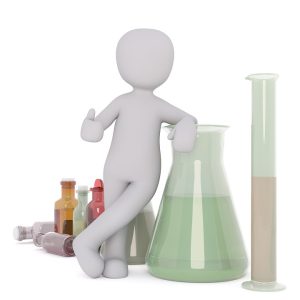This is a case scenario of a young female with upper right abdominal pain and jaundice. History of the patient, examination, and investigations are presented here. Viewers should try to diagnose this patient. This will be followed by a discussion of the case after a few days.
Case presentation of the patient with upper right abdominal pain and jaundice…
A forty years old female, a resident of Gujranwala, was admitted through the emergency with fever, and upper right abdominal pain for two weeks.
The fever was high grade, continuous with rigors and chills, and relieved with medications only.
She also developed upper right abdominal pain two weeks back. The pain was moderate to severe in intensity and associated with a worsening yellowish discoloration of skin and sclera and vomiting.
She reported that jaundice has been there since childhood but has never been bothersome and never been investigated. She also stated that one year back she had a similar upper right abdominal pain and was told by the doctor that she has gallstones.
The patient did not have any history of itching, clay-colored stools, abdominal distension, bleeding tendencies or altered mental status.
The patient has never been transfused although she has been on hematinics and supplements.
Family and personal history …
She has three sons, two of whom have jaundice. The eldest son has received two transfusions over the past few years because of anemia.
She belongs to a poor socioeconomic status and is currently not on any medications.
On examination …
The patient had a Temperature of a 102 F. She was tachypneic, had tachycardia with a Blood pressure of 100/60 mmHg.
She was moderately pale, markedly icteric and had no accessible lymphadenopathy. She had no pedal edema and had no peripheral stigmata of chronic liver disease.
Examination of the Abdomen:
The abdomen was soft but she was tender in the right hypochondrium. She had hepatomegaly of 6 cm below the right costal margins and splenomegaly of 10 cm below the left costal margin. The liver and spleen were firm with smooth surfaces and regular borders.
Rest of the systemic examination was unremarkable except for a Grade 2/6 systolic murmur in the pulmonary area.

Investigations of the patient
Blood CP:
HB = 7.9 gm/dl (reticulocyte count: 2.5%), Hematocrit = 21.3 fl
Total leukocyte count (TLC) = 31000/ul
Platelets = 289000/ul
Mean corpuscular volume = 86 fl
MCHC = 37.3 gm/dl
Peripheral smear:
Neutrophilic leukocytosis, Marked anemia ( anisocytosis, micocytosis, Spherocytes)
Chemistry …
Bilirubin: 18.5 mg/dl (Conjugated: 7.5 mg/dl, Unconjugated: 11.5 mg/dl)
LDH: 689 (230-460 U/l)
ALT: 12 U/l
Alkaline phosphatase: 129 U/l
Urea: 37 mg/dl
Creatinine: 0.57 mg/dl
S. albumin = 2.2 g/dl
Ultrasound abdomen :
Splenomegaly, an Irregular hyperechoic area in the gallbladder fossa (empyema/ sludge?)
Questions:
What investigations would you suggest at this stage?
How would you plan your management?

Follow up of our patient …
We admitted the patient with the following differential diagnosis in mind:
- Cholecystitis/ Ascending cholangitis in the background of hemolytic anemia
- Chronic liver disease
- Malaria
- Hematological Malignancy
The patient was put on treatment for cholecystitis but was simultaneously investigated for the underlying disorder.
Hemolytic anemia was suspected as a hereditary disorder like thalassemia intermedia or hereditary spherocytosis.
Other awaited labs …
ANA (antinuclear antibodies): Negative
Coombs Test: Negative
Osmotic Fragility: Positive
So the final diagnosis was Hereditary spherocytosis with Cholecystitis
Hospital Stay …
The patient developed Ascites during her stay. Empyema gallbladder with rupture into the peritoneal cavity was suspected. Urgent general surgery consult was requested. Initially, a conservative approach was advised by the surgeons.
The patient went into a state of shock and collapsed. Cardiopulmonary resuscitation was done and she was revived and shifted to the intensive care unit.
She was operated, improved and was shifted back to the ward.
Her sons were also investigated and were found to have the same disease i.e. Hereditary spherocytosis.
She was planned for splenectomy after a few months.
A discussion about hereditary spherocytosis will be posted soon!